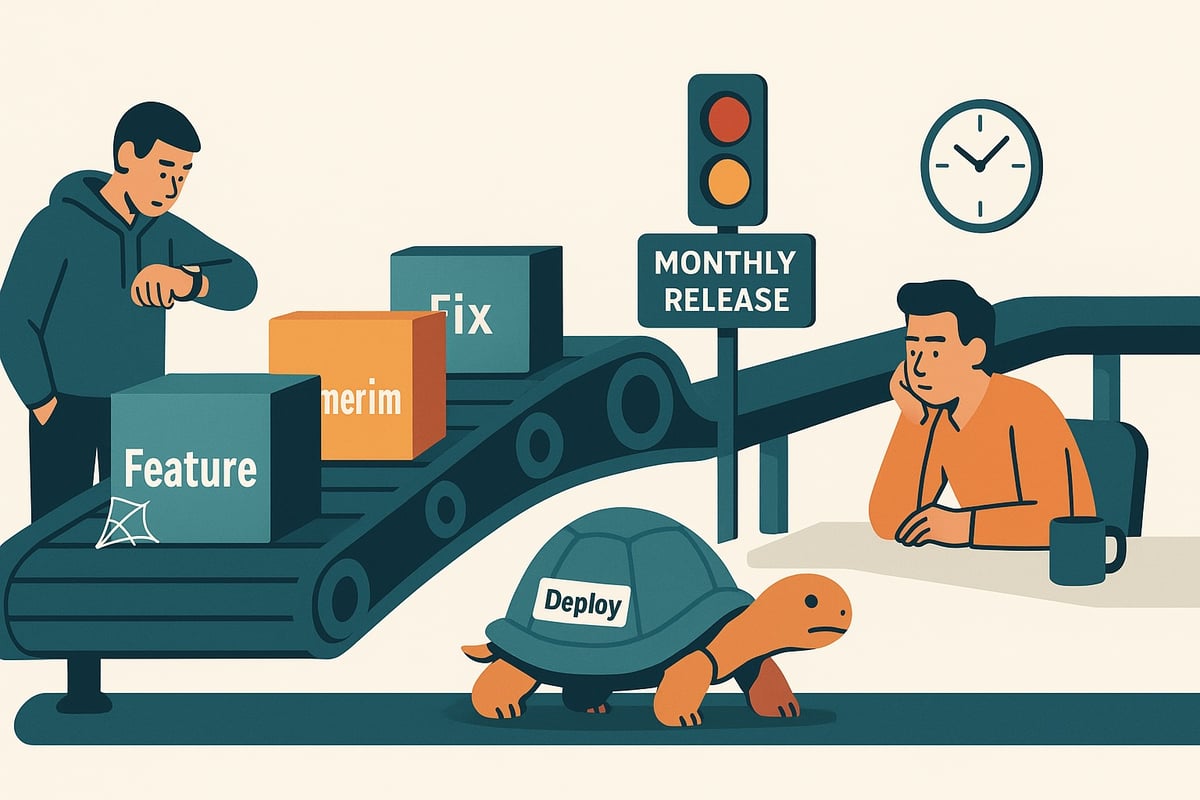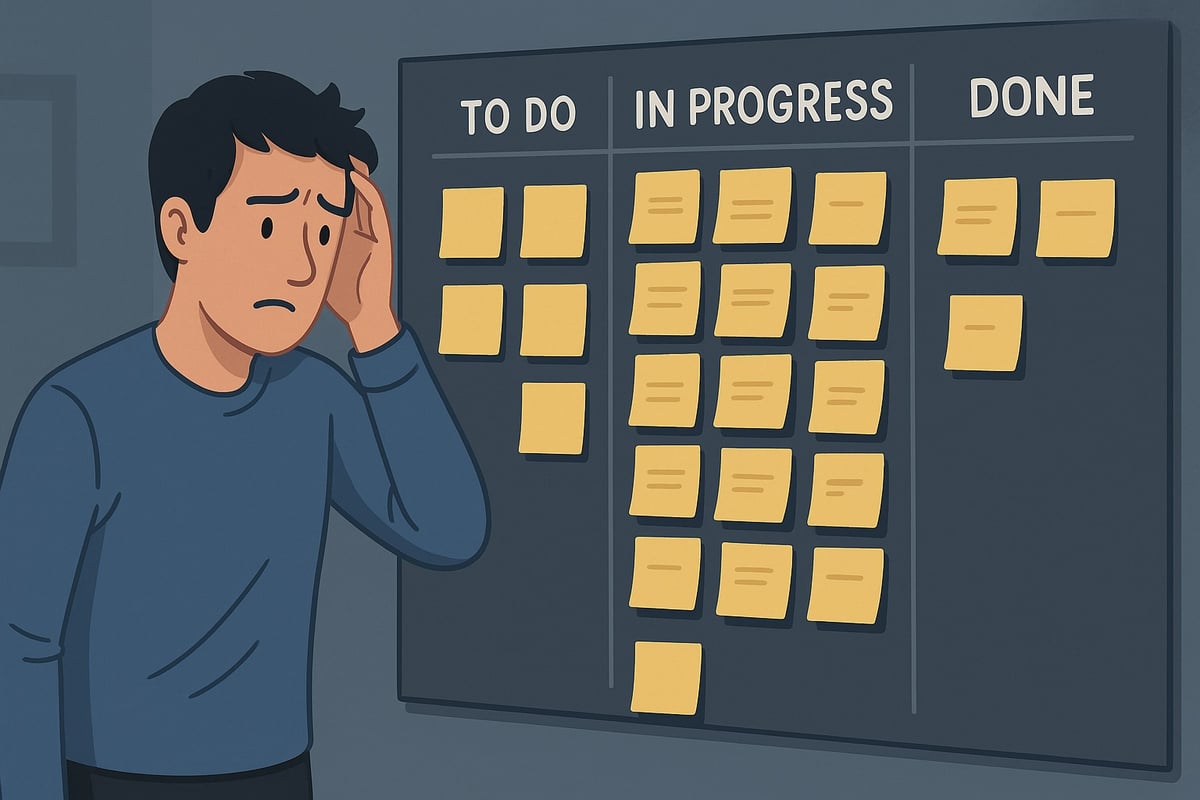Last month, an engineering leader asked me a variation of the question: “Why does my team seem so… defeated?”
The answer was sitting right in their deployment pipeline. Their teams were spending two weeks building features, then watching them rot in staging for another month. This pattern destroys more engineering teams than any technical debt or architectural mistake.
Here’s how deployment bottlenecks slowly strangle engineering teams. Not with a dramatic failure, but with the gradual erosion of momentum, morale, and ultimately, your best talent walking out the door.
The Four Horsemen of Slow Deployments
1. The Big Bang Problem
When lots of changes are pushed at once, you’re not reducing risk, you’re concentrating it. One change equals one potential failure point. Fifty changes? That’s 1,225 potential interactions between changes.
At a fintech company where “safe” monthly releases regularly broke production, switching to daily deployments dropped incidents by 80%. Every high-performing team follows the same pattern: smaller releases, fewer disasters.
2. The Rollback Nightmare
When lots of changes are pushed at once, rolling back becomes Russian roulette. Which of the 47 merged changes caused the issue?
One particularly painful incident I’ve seen cost 14 hours and over $25,000 to identify the culprit in a massive PR release. Teams that switch to single-change deployments turn 14-hour nightmares into 15-minute fixes.
3. The Debugging Maze
Hard to identify which change is causing an issue when you’re sifting through weeks of accumulated changes. What takes 15 minutes with a single change takes hours with 50 changes. You’re not just checking each change, you’re checking exponential interactions.
Every debugging session becomes an archaeological dig through layers of merged code, each with its own assumptions and side effects.
4. The Context Graveyard
Feedback loops are longer and context is lost between commit and production. When developers get feedback three weeks later, they’ve forgotten their decision-making process.
This is the silent killer that nobody talks about. Brilliant engineers spend hours reconstructing their own thought process from weeks prior. That’s not development, that’s archaeology. And it’s soul-crushing.
The Uncomfortable Truth Nobody Admits
Here’s what nobody tells you: Your “safety-first” deployment process is actually making you less safe.
Companies deploying hourly have fewer production incidents than ones deploying monthly. Every time. After watching three “safe” transformations that added process but multiplied problems, the pattern becomes clear: when you batch changes together, you’re not reducing risk, you’re concentrating it into a monthly explosion.
The safest deployments aren’t the ones with the most approvals. They’re the ones that happen so frequently that rolling back is muscle memory. Your elaborate approval process isn’t preventing failures; it’s preventing learning.
The Human Cost Nobody Measures
Nothing kills developer motivation faster than watching their work sit in purgatory. The decay is predictable:
- Day 1: “Can’t wait to see this in production!”
- Week 1: “Hope this ships soon”
- Week 2: “Whatever, I’ve moved on”
- Week 3: “Why do I even bother?”
When your best engineers compare notes with peers at other companies and mention “monthly releases” at meetups, the awkward silence tells them everything. They don’t complain – they update their LinkedIn.
Meanwhile, slow releases don’t just delay features, they kill innovation entirely. When shipping an experiment takes two months, developers stop experimenting. Your deployment process becomes a filter that only lets through safe, boring, incremental changes.
The Bottom Line
Every day a feature sits in staging costs real money. That checkout optimization improving conversion by 2%? At $10M monthly revenue, each week of delay costs $50,000. While you wait for your monthly release window, competitors ship 20 times, gathering feedback and building loyalty while your code grows stale.
The fix isn’t complicated – it’s just scary. But here’s the thing: The risk of changing is tiny compared to the guaranteed damage of staying the same.
Start small: pick one team, cut their deployment time in half, measure results, and let success spread organically. Teams can go from monthly to daily deployments in weeks. The same developers who were updating resumes suddenly become excited about work again.
Your best engineers already know this. They’re either pushing for change or polishing their resumes. Which outcome would you prefer?
The companies winning in 2025 aren’t the ones with the best code, they’re the ones who get that code to customers fastest. The question isn’t whether you can afford to speed up deployments. It’s whether you can afford not to.








